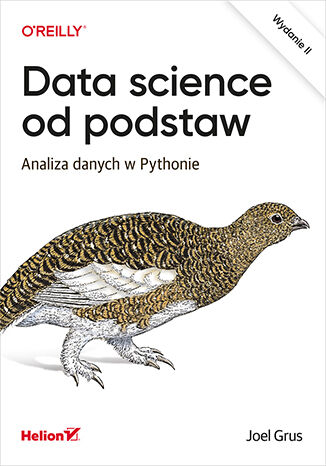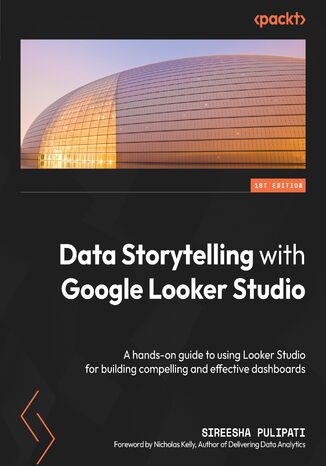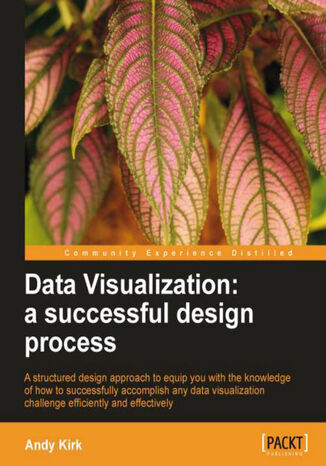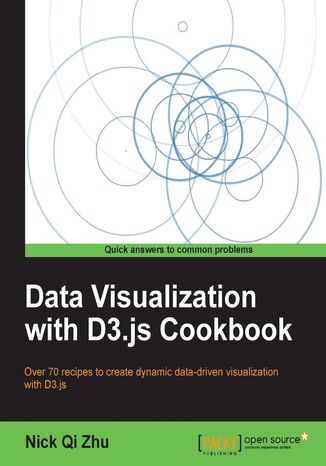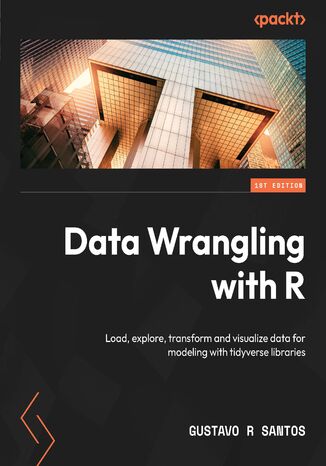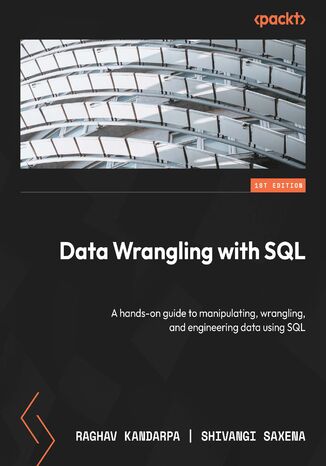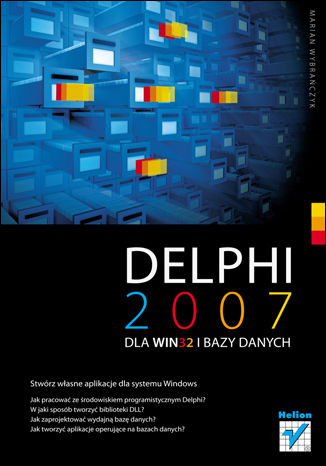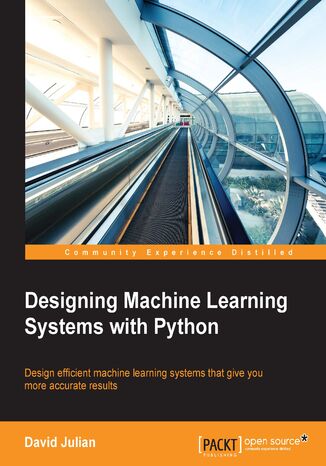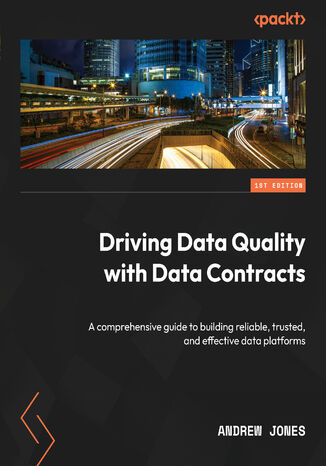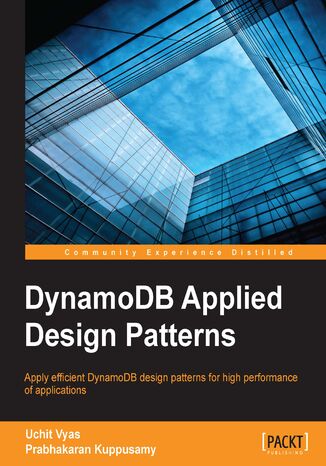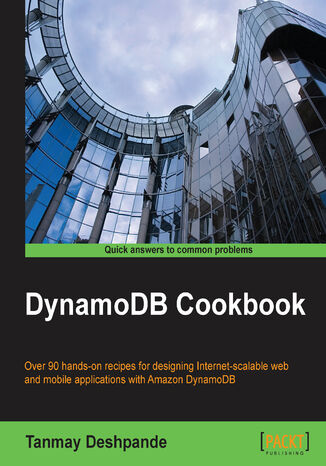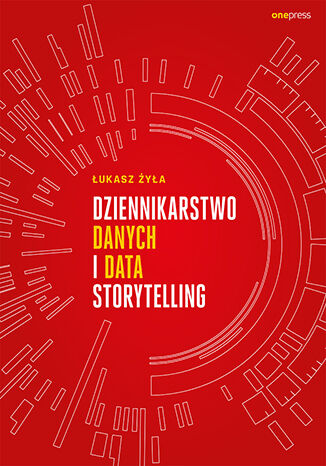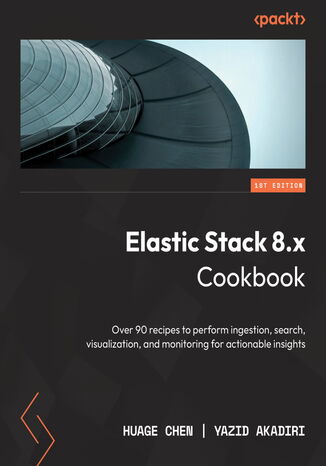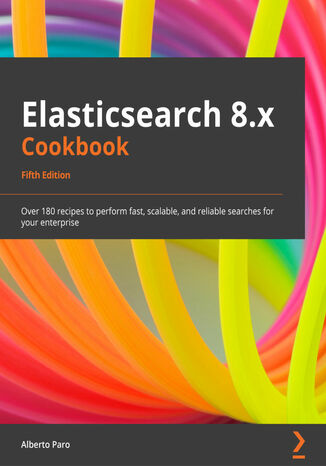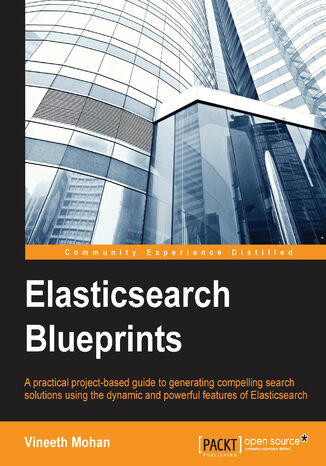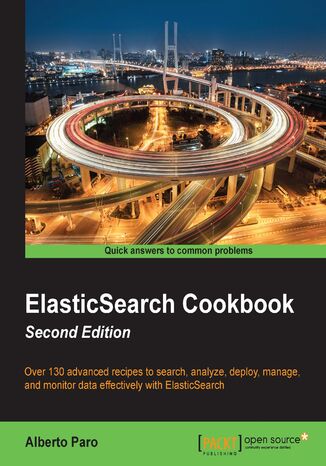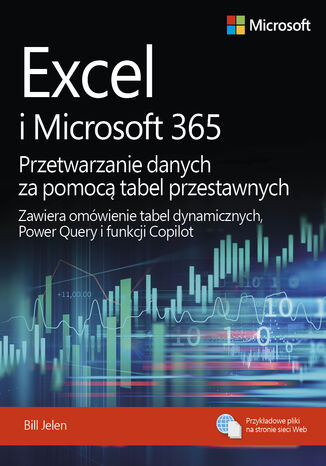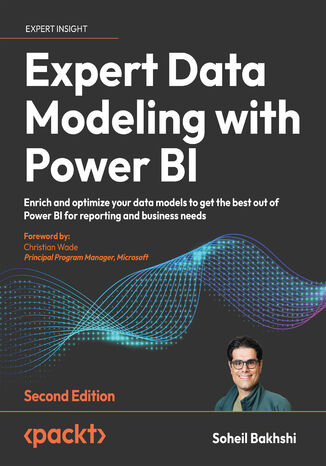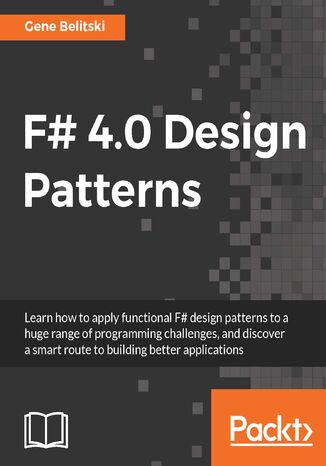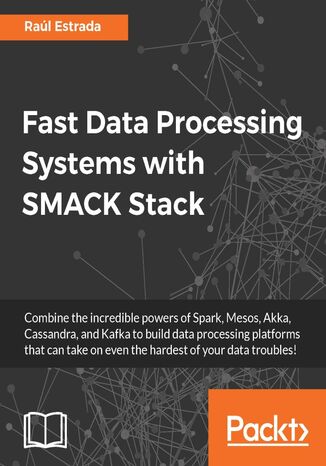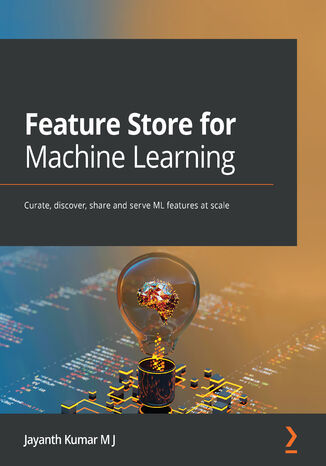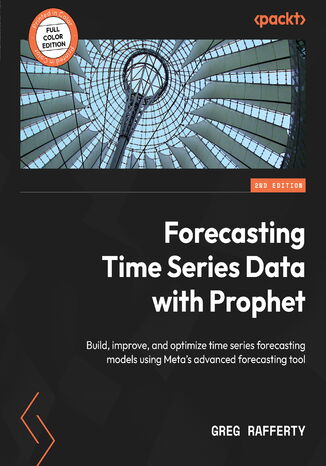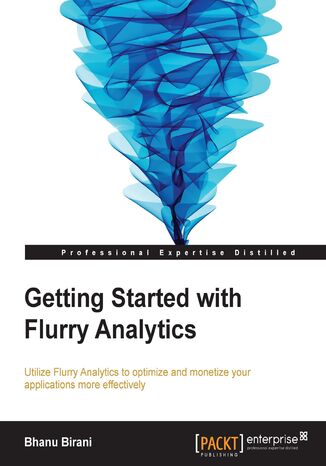Categories
Ebooks
-
Business and economy
- Bitcoin
- Businesswoman
- Coaching
- Controlling
- E-business
- Economy
- Finances
- Stocks and investments
- Personal competence
- Computer in the office
- Communication and negotiation
- Small company
- Marketing
- Motivation
- Multimedia trainings
- Real estate
- Persuasion and NLP
- Taxes
- Social policy
- Guides
- Presentations
- Leadership
- Public Relation
- Reports, analyses
- Secret
- Social Media
- Sales
- Start-up
- Your career
- Management
- Project management
- Human Resources
-
For children
-
For youth
-
Education
-
Encyclopedias, dictionaries
-
E-press
- Architektura i wnętrza
- Health and Safety
- Biznes i Ekonomia
- Home and garden
- E-business
- Ekonomia i finanse
- Esoterecism
- Finances
- Personal finance
- Business
- Photography
- Computer science
- HR & Payroll
- For women
- Computers, Excel
- Accounts
- Culture and literature
- Scientific and academic
- Environmental protection
- Opinion-forming
- Education
- Taxes
- Travelling
- Psychology
- Religion
- Agriculture
- Book and press market
- Transport and Spedition
- Healthand beauty
-
History
-
Computer science
- Office applications
- Data bases
- Bioinformatics
- IT business
- CAD/CAM
- Digital Lifestyle
- DTP
- Electronics
- Digital photography
- Computer graphics
- Games
- Hacking
- Hardware
- IT w ekonomii
- Scientific software package
- School textbooks
- Computer basics
- Programming
- Mobile programming
- Internet servers
- Computer networks
- Start-up
- Operational systems
- Artificial intelligence
- Technology for children
- Webmastering
-
Other
-
Foreign languages
-
Culture and art
-
School reading books
-
Literature
- Antology
- Ballade
- Biographies and autobiographies
- For adults
- Dramas
- Diaries, memoirs, letters
- Epic, epopee
- Essay
- Fantasy and science fiction
- Feuilletons
- Work of fiction
- Humour and satire
- Other
- Classical
- Crime fiction
- Non-fiction
- Fiction
- Mity i legendy
- Nobelists
- Novellas
- Moral
- Okultyzm i magia
- Short stories
- Memoirs
- Travelling
- Narrative poetry
- Poetry
- Politics
- Popular science
- Novel
- Historical novel
- Prose
- Adventure
- Journalism, publicism
- Reportage novels
- Romans i literatura obyczajowa
- Sensational
- Thriller, Horror
- Interviews and memoirs
-
Natural sciences
-
Social sciences
-
School textbooks
-
Popular science and academic
- Archeology
- Bibliotekoznawstwo
- Cinema studies
- Philology
- Polish philology
- Philosophy
- Finanse i bankowość
- Geography
- Economy
- Trade. World economy
- History and archeology
- History of art and architecture
- Cultural studies
- Linguistics
- Literary studies
- Logistics
- Maths
- Medicine
- Humanities
- Pedagogy
- Educational aids
- Popular science
- Other
- Psychology
- Sociology
- Theatre studies
- Theology
- Economic theories and teachings
- Transport i spedycja
- Physical education
- Zarządzanie i marketing
-
Guides
-
Game guides
-
Professional and specialist guides
-
Law
- Health and Safety
- History
- Road Code. Driving license
- Law studies
- Healthcare
- General. Compendium of knowledge
- Academic textbooks
- Other
- Construction and local law
- Civil law
- Financial law
- Economic law
- Economic and trade law
- Criminal law
- Criminal law. Criminal offenses. Criminology
- International law
- International law
- Health care law
- Educational law
- Tax law
- Labor and social security law
- Public, constitutional and administrative law
- Family and Guardianship Code
- agricultural law
- Social law, labour law
- European Union law
- Industry
- Agricultural and environmental
- Dictionaries and encyclopedia
- Public procurement
- Management
-
Tourist guides and travel
- Africa
- Albums
- Southern America
- North and Central America
- Australia, New Zealand, Oceania
- Austria
- Asia
- Balkans
- Middle East
- Bulgary
- China
- Croatia
- The Czech Republic
- Denmark
- Egipt
- Estonia
- Europe
- France
- Mountains
- Greece
- Spain
- Holand
- Iceland
- Lithuania
- Latvia
- Mapy, Plany miast, Atlasy
- Mini travel guides
- Germany
- Norway
- Active travelling
- Poland
- Portugal
- Other
- Przewodniki po hotelach i restauracjach
- Russia
- Romania
- Slovakia
- Slovenia
- Switzerland
- Sweden
- World
- Turkey
- Ukraine
- Hungary
- Great Britain
- Italy
-
Psychology
- Philosophy of life
- Kompetencje psychospołeczne
- Interpersonal communication
- Mindfulness
- General
- Persuasion and NLP
- Academic psychology
- Psychology of soul and mind
- Work psychology
- Relacje i związki
- Parenting and children psychology
- Problem solving
- Intellectual growth
- Secret
- Sexapeal
- Seduction
- Appearance and image
- Philosophy of life
-
Religion
-
Sport, fitness, diets
-
Technology and mechanics
Audiobooks
-
Business and economy
- Bitcoin
- Businesswoman
- Coaching
- Controlling
- E-business
- Economy
- Finances
- Stocks and investments
- Personal competence
- Communication and negotiation
- Small company
- Marketing
- Motivation
- Real estate
- Persuasion and NLP
- Taxes
- Social policy
- Guides
- Presentations
- Leadership
- Public Relation
- Secret
- Social Media
- Sales
- Start-up
- Your career
- Management
- Project management
- Human Resources
-
For children
-
For youth
-
Education
-
Encyclopedias, dictionaries
-
E-press
-
History
-
Computer science
-
Other
-
Foreign languages
-
Culture and art
-
School reading books
-
Literature
- Antology
- Ballade
- Biographies and autobiographies
- For adults
- Dramas
- Diaries, memoirs, letters
- Epic, epopee
- Essay
- Fantasy and science fiction
- Feuilletons
- Work of fiction
- Humour and satire
- Other
- Classical
- Crime fiction
- Non-fiction
- Fiction
- Mity i legendy
- Nobelists
- Novellas
- Moral
- Okultyzm i magia
- Short stories
- Memoirs
- Travelling
- Poetry
- Politics
- Popular science
- Novel
- Historical novel
- Prose
- Adventure
- Journalism, publicism
- Reportage novels
- Romans i literatura obyczajowa
- Sensational
- Thriller, Horror
- Interviews and memoirs
-
Natural sciences
-
Social sciences
-
Popular science and academic
-
Guides
-
Professional and specialist guides
-
Law
-
Tourist guides and travel
-
Psychology
- Philosophy of life
- Interpersonal communication
- Mindfulness
- General
- Persuasion and NLP
- Academic psychology
- Psychology of soul and mind
- Work psychology
- Relacje i związki
- Parenting and children psychology
- Problem solving
- Intellectual growth
- Secret
- Sexapeal
- Seduction
- Appearance and image
- Philosophy of life
-
Religion
-
Sport, fitness, diets
-
Technology and mechanics
Videocourses
-
Data bases
-
Big Data
-
Biznes, ekonomia i marketing
-
Cybersecurity
-
Data Science
-
DevOps
-
For children
-
Electronics
-
Graphics/Video/CAX
-
Games
-
Microsoft Office
-
Development tools
-
Programming
-
Personal growth
-
Computer networks
-
Operational systems
-
Software testing
-
Mobile devices
-
UX/UI
-
Web development
-
Management
Podcasts
- Ebooks
- Data bases
- Other
Other
Data science od podstaw. Analiza danych w Pythonie. Wydanie II
Analityka danych jest uważana za wyjątkowo obiecującą dziedzinę wiedzy. Rozwija się błyskawicznie i znajduje coraz to nowsze zastosowania. Profesjonaliści biegli w eksploracji danych i wydobywaniu z nich pożytecznych informacji mogą liczyć na interesującą pracę i bardzo atrakcyjne warunki zatrudnienia. Jednak aby zostać analitykiem danych, trzeba znać matematykę i statystykę, a także nauczyć się programowania. Umiejętności w zakresie uczenia maszynowego i uczenia głębokiego również są ważne. W przypadku tak specyficznej dziedziny, jaką jest nauka o danych, szczególnie istotne jest zdobycie gruntownych podstaw i dogłębne ich zrozumienie. W tym przewodniku opisano zagadnienia związane z podstawami nauki o danych. Wyjaśniono niezbędne elementy matematyki i statystyki. Przedstawiono także techniki budowy potrzebnych narzędzi i sposoby działania najistotniejszych algorytmów. Książka została skonstruowana tak, aby poszczególne implementacje były jak najbardziej przejrzyste i zrozumiałe. Zamieszczone tu przykłady napisano w Pythonie: jest to język dość łatwy do nauki, a pracę na danych ułatwia szereg przydatnych bibliotek Pythona. W drugim wydaniu znalazły się nowe tematy, takie jak uczenie głębokie, statystyka i przetwarzanie języka naturalnego, a także działania na ogromnych zbiorach danych. Zagadnienia te często pojawiają się w pracy współczesnego analityka danych. W książce między innymi: elementy algebry liniowej, statystyki i rachunku prawdopodobieństwa zbieranie, oczyszczanie i eksploracja danych algorytmy modeli analizy danych podstawy uczenia maszynowego systemy rekomendacji i przetwarzanie języka naturalnego analiza sieci społecznościowych i algorytm MapReduce Nauka o danych: bazuj na solidnych podstawach!
Sireesha Pulipati, Nicholas Kelly
Presenting data visually makes it easier for organizations and individuals to interpret and analyze information. Looker Studio is an easy-to-use, collaborative tool that enables you to transform your data into engaging visualizations. This allows you to build and share dashboards that help monitor key performance indicators, identify patterns, and generate insights to ultimately drive decisions and actions.Data Storytelling with Looker Studio begins by laying out the foundational design principles and guidelines that are essential to creating accurate, effective, and compelling data visualizations. Next, you’ll delve into features and capabilities of Looker Studio – from basic to advanced – and explore their application with examples. The subsequent chapters walk you through building dashboards with a structured three-stage process called the 3D approach using real-world examples that’ll help you understand the various design and implementation considerations. This approach involves determining the objectives and needs of the dashboard, designing its key components and layout, and developing each element of the dashboard.By the end of this book, you will have a solid understanding of the storytelling approach and be able to create data stories of your own using Looker Studio.
Data Visualization: a successful design process
Do you want to create more attractive charts? Or do you have huge data sets and need to unearth the key insights in a visual manner? Data visualization is the representation and presentation of data, using proven design techniques to bring alive the patterns, stories and key insights locked away.Data Visualization: a Successful Design Process explores the unique fusion of art and science that is data visualization; a discipline for which instinct alone is insufficient for you to succeed in enabling audiences to discover key trends, insights and discoveries from your data. This book will equip you with the key techniques required to overcome contemporary data visualization challenges. You'll discover a proven design methodology that helps you develop invaluable knowledge and practical capabilities.You'll never again settle for a default Excel chart or resort to fancy-looking graphs. You will be able to work from the starting point of acquiring, preparing and familiarizing with your data, right through to concept design. Choose your killer visual representation to engage and inform your audience.Data Visualization: a Successful Design Process will inspire you to relish any visualization project with greater confidence and bullish know-how; turning challenges into exciting design opportunities.
D3.js is a JavaScript library designed to display digital data in dynamic graphical form. It helps you bring data to life using HTML, SVG, and CSS. D3 allows great control over the final visual result, and it is the hottest and most powerful web-based data visualization technology on the market today.Data Visualization with D3.js Cookbook is packed with practical recipes to help you learn every aspect of data visualization with D3.Data Visualization with D3.js Cookbook is designed to provide you with all the guidance you need to get to grips with data visualization with D3. With this book, you will create breathtaking data visualization with professional efficiency and precision with the help of practical recipes, illustrations, and code samples.Data Visualization with D3.js Cookbook starts off by touching upon data visualization and D3 basics before gradually taking you through a number of practical recipes covering a wide range of topics you need to know about D3.You will learn the fundamental concepts of data visualization, functional JavaScript, and D3 fundamentals including element selection, data binding, animation, and SVG generation. You will also learn how to leverage more advanced techniques such as custom interpolators, custom tweening, timers, the layout manager, force manipulation, and so on. This book also provides a number of pre-built chart recipes with ready-to-go sample code to help you bootstrap quickly.
In this information era, where large volumes of data are being generated every day, companies want to get a better grip on it to perform more efficiently than before. This is where skillful data analysts and data scientists come into play, wrangling and exploring data to generate valuable business insights. In order to do that, you’ll need plenty of tools that enable you to extract the most useful knowledge from data.Data Wrangling with R will help you to gain a deep understanding of ways to wrangle and prepare datasets for exploration, analysis, and modeling. This data book enables you to get your data ready for more optimized analyses, develop your first data model, and perform effective data visualization.The book begins by teaching you how to load and explore datasets. Then, you’ll get to grips with the modern concepts and tools of data wrangling. As data wrangling and visualization are intrinsically connected, you’ll go over best practices to plot data and extract insights from it. The chapters are designed in a way to help you learn all about modeling, as you will go through the construction of a data science project from end to end, and become familiar with the built-in RStudio, including an application built with Shiny dashboards.By the end of this book, you’ll have learned how to create your first data model and build an application with Shiny in R.
Data Wrangling with SQL. A hands-on guide to manipulating, wrangling, and engineering data using SQL
Raghav Kandarpa, Shivangi Saxena
The amount of data generated continues to grow rapidly, making it increasingly important for businesses to be able to wrangle this data and understand it quickly and efficiently. Although data wrangling can be challenging, with the right tools and techniques you can efficiently handle enormous amounts of unstructured data.The book starts by introducing you to the basics of SQL, focusing on the core principles and techniques of data wrangling. You’ll then explore advanced SQL concepts like aggregate functions, window functions, CTEs, and subqueries that are very popular in the business world. The next set of chapters will walk you through different functions within SQL query that cause delays in data transformation and help you figure out the difference between a good query and bad one. You’ll also learn how data wrangling and data science go hand in hand. The book is filled with datasets and practical examples to help you understand the concepts thoroughly, along with best practices to guide you at every stage of data wrangling.By the end of this book, you’ll be equipped with essential techniques and best practices for data wrangling, and will predominantly learn how to use clean and standardized data models to make informed decisions, helping businesses avoid costly mistakes.
Delphi 2007 dla WIN32 i bazy danych
Stwórz własne aplikacje dla systemu Windows Jak pracować ze środowiskiem programistycznym Delphi? W jaki sposób tworzyć biblioteki DLL? Jak zaprojektować wydajną bazę danych? Jak tworzyć aplikacje operujące na bazach danych? Wśród wszystkich środowisk programistycznych umożliwiających tworzenie aplikacji Delphi jest jednym z najbardziej znanych i popularnych. To narzędzie, obecne na rynku od ponad dwunastu lat, cieszy się zasłużonym uznaniem twórców oprogramowania -- dzięki sporym możliwościom, ogromnej bibliotece komponentów i czytelnej składni języka Object Pascal, będącego podstawą tego środowiska. Najnowsza wersja Delphi, oznaczona symbolem RAD Studio 2007, nie tylko umożliwia tworzenie "klasycznych" aplikacji dla Windows, opartych o Windows API, ale także udostępnia kontrolki platformy .NET. Książka "Delphi 2007 dla WIN32 i bazy danych" to podręcznik opisujący zasady tworzenia aplikacji dla systemu Windows w najnowszej wersji Delphi. Przedstawia ona techniki tworzenia aplikacji bazodanowych w oparciu o mechanizmy Windows API i kontrolki VCL. Czytając ją, poznasz komponenty, jakie Delphi oferuje programiście, i dowiesz się, jak korzystać z nich we własnych aplikacjach. Opanujesz mechanizmy komunikacji z niemal wszystkimi systemami zarządzania bazami danych dostępnymi na rynku. Przeczytasz także o tworzeniu wersji instalacyjnych napisanych przez siebie aplikacji. Interfejs użytkownika Delphi 2007 Komponenty dostępne w Delphi Przetwarzanie grafiki Korzystanie z komponentów VCL Aplikacje wielowątkowe Tworzenie bibliotek DLL Operacje na plikach Obsługa dokumentów XML Projektowanie bazy danych i struktury tabel Komunikacja z bazami danych Mechanizmy blokowania rekordów Tworzenie wersji instalacyjnych aplikacji Wykorzystaj możliwości najnowszej wersji środowiska programistycznego, które zrewolucjonizowało proces tworzenia aplikacji!
Designing Machine Learning Systems with Python. Key design strategies to create intelligent systems
Machine learning is one of the fastest growing trends in modern computing. It has applications in a wide range of fields, including economics, the natural sciences, web development, and business modeling. In order to harness the power of these systems, it is essential that the practitioner develops a solid understanding of the underlying design principles.There are many reasons why machine learning models may not give accurate results. By looking at these systems from a design perspective, we gain a deeper understanding of the underlying algorithms and the optimisational methods that are available. This book will give you a solid foundation in the machine learning design process, and enable you to build customised machine learning models to solve unique problems. You may already know about, or have worked with, some of theoff-the-shelf machine learning models for solving common problems such as spam detection or movie classification, but to begin solving more complex problems, it is important to adapt these models to your own specific needs. This book will give you this understanding and more.
Despite the passage of time and the evolution of technology and architecture, the challenges we face in building data platforms persist. Our data often remains unreliable, lacks trust, and fails to deliver the promised value.With Driving Data Quality with Data Contracts, you’ll discover the potential of data contracts to transform how you build your data platforms, finally overcoming these enduring problems. You’ll learn how establishing contracts as the interface allows you to explicitly assign responsibility and accountability of the data to those who know it best—the data generators—and give them the autonomy to generate and manage data as required. The book will show you how data contracts ensure that consumers get quality data with clearly defined expectations, enabling them to build on that data with confidence to deliver valuable analytics, performant ML models, and trusted data-driven products.By the end of this book, you’ll have gained a comprehensive understanding of how data contracts can revolutionize your organization’s data culture and provide a competitive advantage by unlocking the real value within your data.
Dziennikarstwo danych i data storytelling
Bez danych jesteś jedynie kolejną osobą z opinią... Dziennikarstwo danych przeżywa dziś prawdziwy rozkwit. Dzieje się tak dlatego, że nasze życie w dużej mierze przeniosło się do internetu, a internet to... dane. Megabajty, gigabajty, terabajty danych. Misją współczesnego dziennikarza jest przedstawiać je społeczeństwu rzetelnie, a równocześnie pięknie, czyli w sposób zrozumiały, łatwy do przyswojenia. Nim się jednak owe dane pięknie zestawi, trzeba je znaleźć. Gdzie szukać? Jak je zdobyć? W jaki sposób opowiedzieć dane? Na takie pytania autor odpowiada w tej książce. Nie przeczytasz w niej o "ładnych wykresach", bo wbrew pozorom to nie one są esencją dziennikarstwa danych i data storytellingu. Dowiesz się natomiast, gdzie biją źródła potrzebnych Ci informacji, jak je przetwarzać i analizować. Znajdziesz tu także wskazówki, w jaki sposób tworzyć dobre wizualizacje za pomocą prostych aplikacji dostępnych za darmo w internecie i jak kreować angażujące odbiorców data stories. Na koniec wejdziesz na wyższy poziom - nauczysz się prezentować dane z wykorzystaniem kodu programistycznego. Kto? Co? Jak? Gdzie? Kiedy? ― odpowiedzi na te podstawowe pytania musi znaleźć każdy dziennikarz, który chce rzetelnie wykonać swoją pracę. Jednocześnie przy zalewie informacji, danych ze źródeł, których weryfikacja jest równie czasochłonna, każdy wykonujący ten piękny zawód coraz bardziej przypomina mitycznego Syzyfa. Przebicie się przez gigabajty informacji, przetworzenie ich i stworzenie materiału, który tłumaczy odbiorcy rzeczywistość, jest dziś działaniem obarczonym ogromnym wysiłkiem i jeszcze większym ryzykiem. Kaskadowy spadek zaufania do instytucji publicznych i prywatnych, z jakim mamy do czynienia od lat, oddziałuje także na media, z jednej strony wystawiane na szereg nacisków biznesowych, politycznych i społecznych, z drugiej ― borykające się z ciągłymi problemami finansowymi. Co warto wiedzieć, dobre dziennikarstwo, jakościowe dziennikarstwo to coś, co wymaga swobodnego poruszania się autorów w przestrzeni internetu i danych, a także poznania podstaw funkcjonowania w tej przestrzeni. Dlatego, jeżeli chcemy mieć przynajmniej cień nadziei na dobrze wykonaną pracę, warto sięgnąć po książkę Łukasza Żyły. W zawodzie zawsze mi powtarzano, że tej profesji człowiek uczy się tylko w praktyce i na pewno nie na studiach. Nadal tak jest, choć czasy, w których media dosłownie pączkują na każdym kroku i angażują coraz młodszych adeptów dziennikarstwa, wymagają, by sięgnąć po informacyjną pigułę, swoisty wykrywacz min, dzięki czemu te pierwsze kroki wspomniany początkujący dziennikarz będzie mógł stawiać względnie bezpiecznie. Dziennikarstwo danych i data storytelling to także pozycja dla osób doświadczonych w tym zawodzie. Powód jest oczywisty, technologia zmieniła dziennikarstwo i w pędzie żywiołu, którym ono jest, łatwo popaść w bezpieczną i przez to złudną rutynę, a wtedy jesteśmy o krok od poważnego błędu. Dzięki książce Łukasza Żyły łatwiejsze do ominięcia będą cyfrowe rafy, którymi sieć jest usłana. Bartosz Kurek, były dziennikarz Polsatu, obecnie menedżer ds. public affairs w Philip Morris Co wy tam tak naprawdę robicie? ― to częste pytanie, kiedy mówię, że pracuję w dziale danych „Wyborczej”. Niektórzy ze znawstwem odpowiadają: „Aaa, czyli robicie analizy wyników sprzedaży gazety?”. Inni zmieniają temat, spodziewając się, że zarzucę ich nudnymi opowieściami o uzupełnianiu tabelek liczbami. Co ciekawe, pytanie o to, jak dokładnie wygląda nasza praca, zadają również dziennikarze. Teraz, zamiast wchodzić w szczegóły, będę mógł zacząć odpowiedź od słów: „Jest taka książka, warto przeczytać…”, bo Łukasz w bardzo przystępny sposób tłumaczy, czym to się je. I myślę, że niezależnie od tego, jaką działką dziennikarstwa się zajmujecie, znajdziecie w niej coś dla siebie. Części dotyczące współpracy z urzędnikami, dostępu do informacji czy opowiadania historii powinien przyswoić każdy, kto będzie pracował w zawodzie. Po te o opracowywaniu danych sięgną ambitniejsi, a może po prostu bardziej przewidujący, bo pisać potrafi wielu, ale zdolność pisania połączona z umiejętnością analizowania, programowania lub wizualizowania robi z dziennikarza człowieka do zadań specjalnych. Kiedy czytałem tę książkę, wiele razy żałowałem, że czegoś takiego nie było, kiedy ja zaczynałem przygodę z danymi. Dzięki niej widzę, ile jeszcze powinienem się w tej dziedzinie nauczyć. Dominik Uhlig, szef BIQdata.pl ― działu danych „Gazety Wyborczej”
Huage Chen, Yazid Akadiri, Shay Banon
Learn how to make the most of the Elastic Stack (ELK Stack) products—including Elasticsearch, Kibana, Elastic Agent, and Logstash—to take data reliably and securely from any source, in any format, and then search, analyze, and visualize it in real-time. This cookbook takes a practical approach to unlocking the full potential of Elastic Stack through detailed recipes step by step.Starting with installing and ingesting data using Elastic Agent and Beats, this book guides you through data transformation and enrichment with various Elastic components and explores the latest advancements in search applications, including semantic search and Generative AI. You'll then visualize and explore your data and create dashboards using Kibana. As you progress, you'll advance your skills with machine learning for data science, get to grips with natural language processing, and discover the power of vector search. The book covers Elastic Observability use cases for log, infrastructure, and synthetics monitoring, along with essential strategies for securing the Elastic Stack. Finally, you'll gain expertise in Elastic Stack operations to effectively monitor and manage your system.
Elasticsearch is a Lucene-based distributed search engine at the heart of the Elastic Stack that allows you to index and search unstructured content with petabytes of data. With this updated fifth edition, you'll cover comprehensive recipes relating to what's new in Elasticsearch 8.x and see how to create and run complex queries and analytics.The recipes will guide you through performing index mapping, aggregation, working with queries, and scripting using Elasticsearch. You'll focus on numerous solutions and quick techniques for performing both common and uncommon tasks such as deploying Elasticsearch nodes, using the ingest module, working with X-Pack, and creating different visualizations. As you advance, you'll learn how to manage various clusters, restore data, and install Kibana to monitor a cluster and extend it using a variety of plugins. Furthermore, you'll understand how to integrate your Java, Scala, Python, and big data applications such as Apache Spark and Pig with Elasticsearch and create efficient data applications powered by enhanced functionalities and custom plugins.By the end of this Elasticsearch cookbook, you'll have gained in-depth knowledge of implementing the Elasticsearch architecture and be able to manage, search, and store data efficiently and effectively using Elasticsearch.
Zawiera omówienie tabel dynamicznych, Power Query i funkcji Copilot Dowiedz się, jak używać tabel i wykresów przestawnych w programie Microsoft Excel do tworzenia solidnych, dynamicznych raportów w ciągu kilku minut: zyskaj pełną kontrolę nad swoimi danymi i biznesem! Nawet jeśli nigdy wcześniej nie tworzyłeś tabel przestawnych, ta książka pomoże ci wykorzystać ich elastyczność i moc analityczną. Zawiera też omówienie nowych funkcji tablicowych oraz funkcji Copilot, rozszerzających możliwości analityczne. Czerpiąc z ponad 30 lat doświadczeń w pracy z programem Excel, MVP Bill Jelen ("MrExcel") udostępnia praktyczne "recipes" rozwiązywania rzeczywistych problemów biznesowych, wskazuje sposoby unikania pomyłek oraz zaawansowane wskazówki i sztuczki, których nie znajdziesz nigdzie indziej. Dzięki tej książce Czytelnik będzie umiał: - Stosować proste i skuteczne sposoby tworzenia, dostosowywania, modyfikowania i kontrolowania tabel przestawnych. - Używać funkcji Copilot i Analyze Data do tworzenia tabel przestawnych - Przekształcać wielkie zbiory danych w czytelne raporty. - Wyróżniać klientów, produkty lub regiony o najwyższych przychodach. - Tworzyć potężne raporty krzyżowe za pomocą Power Query i dynamicznych funkcji tablicowych. - Używać funkcji PIVOTBY i GROUPBY do tworzenia raportów nie wymagających odświeżania. - Tworzyć tabele przestawne zawierające dane geograficzne. - Tworzyć i udostępniać nowoczesne dynamiczne pulpity. - Ulepszać wyniki analiz w locie, przeciągając i upuszczając pola. - Budować dynamiczne samoobsługowe systemy raportujące. - Udostępniać tabele przestawne współpracownikom. - Łączyć dane, korzystając z możliwości technologii Power Pivot. - Generować tabele przestawne za pomocą VBA w wersji klasycznej lub za pomocą języka Typescript w Excel Online. - Wykorzystać funkcję GetPivotData do tworzenia lepiej wyglądających raportów. - Anulować przestawienie danych źródłowych w celu ułatwienia pracy z nimi. O tej książce - Dla każdego, kto chce w krótszym czasie osiągnąć więcej przy użyciu Microsoft Excel - Dla profesjonalistów biznesu i finansów, przedsiębiorców, naukowców, studentów i wszystkich tych, którzy potrzebują wydajnie analizować dane i zarządzać nimi O autorach Bill Jelen ma tytuł Excel MVP, jest autorem 69 książek i gospodarzem witryny MrExcel.com. Był komentatorem ESPN podczas World Excel Championships, miał ponad 80 gościnnych wystąpień w programie telewizyjnym Call for Help oraz wyróżnionym gościem roku programu radiowego Computer America. Pisze felietony dla pisma Strategic Finance. Wyprodukował ponad 2600 odcinków podcastu wideo Learn Excel from MrExcel.
Soheil Bakhshi, Christian Wade
This book is a comprehensive guide to understanding the ins and outs of data modeling and how to create full-fledged data models using Power BI confidently.In this new, fully updated edition, you'll learn how to connect data from multiple sources, understand data, define and manage relationships between data, and shape data models to gain deep and detailed insights about your organization. As you advance through the chapters, the book will demonstrate how to prepare efficient data models in the Power Query Editor and use simpler DAX code with new data modeling features. You'll explore how to use the various data modeling and navigation techniques and perform custom calculations using the modeling features with the help of real-world examples. Finally, you'll learn how to use some new and advanced modeling features to enhance your data models to carry out a wide variety of complex tasks. Additionally, you'll learn valuable best practices and explore common data modeling complications and the solutions to supercharge the process of creating a data model in Power BI and build better-performing data models.By the end of this Power BI book, you'll have gained the skills you need to structure data coming from multiple sources in different ways to create optimized data models that support high-performing reports and data analytics.
F# 4.0 Design Patterns. Solve complex problems with functional thinking
Following design patterns is a well-known approach to writing better programs that captures and reuses high-level abstractions that are common in many applications. This book will encourage you to develop an idiomatic F# coding skillset by fully embracing the functional-first F# paradigm. It will also help you harness this powerful instrument to write succinct, bug-free, and cross-platform code.F# 4.0 Design Patterns will start off by helping you develop a functional way of thinking. We will show you how beneficial the functional-first paradigm is and how to use it to get the optimum results. The book will help you acquire the practical knowledge of the main functional design patterns, the relationship of which with the traditional Gang of Four set is not straightforward.We will take you through pattern matching, immutable data types, and sequences in F#. We will also uncover advanced functional patterns, look at polymorphic functions, typical data crunching techniques, adjusting code through augmentation, and generalization. Lastly, we will take a look at the advanced techniques to equip you with everything you need to write flawless code.
Fast Data Processing Systems with SMACK Stack. Click here to enter text
SMACK is an open source full stack for big data architecture. It is a combination of Spark, Mesos, Akka, Cassandra, and Kafka. This stack is the newest technique developers have begun to use to tackle critical real-time analytics for big data. This highly practical guide will teach you how to integrate these technologies to create a highly efficient data analysis system for fast data processing.We’ll start off with an introduction to SMACK and show you when to use it. First you’ll get to grips with functional thinking and problem solving using Scala. Next you’ll come to understand the Akka architecture. Then you’ll get to know how to improve the data structure architecture and optimize resources using Apache Spark. Moving forward, you’ll learn how to perform linear scalability in databases with Apache Cassandra. You’ll grasp the high throughput distributed messaging systems using Apache Kafka. We’ll show you how to build a cheap but effective cluster infrastructure with Apache Mesos. Finally, you will deep dive into the different aspect of SMACK using a few case studies. By the end of the book, you will be able to integrate all the components of the SMACK stack and use them together to achieve highly effective and fast data processing.
Feature Store for Machine Learning. Curate, discover, share and serve ML features at scale
Feature store is one of the storage layers in machine learning (ML) operations, where data scientists and ML engineers can store transformed and curated features for ML models. This makes them available for model training, inference (batch and online), and reuse in other ML pipelines. Knowing how to utilize feature stores to their fullest potential can save you a lot of time and effort, and this book will teach you everything you need to know to get started.Feature Store for Machine Learning is for data scientists who want to learn how to use feature stores to share and reuse each other's work and expertise. You’ll be able to implement practices that help in eliminating reprocessing of data, providing model-reproducible capabilities, and reducing duplication of work, thus improving the time to production of the ML model. While this ML book offers some theoretical groundwork for developers who are just getting to grips with feature stores, there's plenty of practical know-how for those ready to put their knowledge to work. With a hands-on approach to implementation and associated methodologies, you'll get up and running in no time.By the end of this book, you’ll have understood why feature stores are essential and how to use them in your ML projects, both on your local system and on the cloud.
Forecasting Time Series Data with Prophet will help you to implement Prophet's cutting-edge forecasting techniques to model future data with high accuracy using only a few lines of code. This second edition has been fully revised with every update to the Prophet package since the first edition was published two years ago. An entirely new chapter is also included, diving into the mathematical equations behind Prophet's models. Additionally, the book contains new sections on forecasting during shocks such as COVID, creating custom trend modes from scratch, and a discussion of recent developments in the open-source forecasting community.You'll cover advanced features such as visualizing forecasts, adding holidays and trend changepoints, and handling outliers. You'll use the Fourier series to model seasonality, learn how to choose between an additive and multiplicative model, and understand when to modify each model parameter. Later, you'll see how to optimize more complicated models with hyperparameter tuning and by adding additional regressors to the model. Finally, you'll learn how to run diagnostics to evaluate the performance of your models in production.By the end of this book, you'll be able to take a raw time series dataset and build advanced and accurate forecasting models with concise, understandable, and repeatable code.
Analytics help you to understand the way your users are interacting with your mobile application. Flurry provides you with a strong analytics tool to keep track of your application and to analyze your application data without much hassle. It provides an SDK for almost all platforms to gather data from all platforms of mobile and web applications. The enormous amount of data Flurry handles directly translates into unique, powerful insights into your applications.Getting Started with Flurry Analytics is a practical, hands-on guide to instantly getting started with Flurry analytics using step-by-step exercises. You will take advantage of the real power of Flurry analytics and provides you with an example-based learning approach to help you master it quickly and efficiently.This book starts by discussing how to set up and integrate Flurry analytics and ends by making you aware of how to track your application using Parse. You will also learn about tracking your application data using Flurry analytics to strengthen your strategies and to improve the application monetization process. You will also learn about configuration and implementation of Flurry analytics and how to make the application track all the necessary details to empower management decisions.
Google Analytics od podstaw. Analiza wpływu biznesowego i wyznaczanie trendów
Google Analytics 4 wyznacza nowe zasady marketingu cyfrowego: obecnie chodzi nie tyle o raportowanie zdarzeń z przeszłości, ile o aktywację danych przez łączenie danych online i offline ze wszystkich strumieni, aby zapewnić kompleksowe informacje marketingowe. Taka analityka cyfrowa umożliwia szybsze podejmowanie decyzji. Umiejętność korzystania z GA4 staje się więc nieodzowna. Oto zwięzły i praktyczny przewodnik po usłudze GA4 i jej integracji z chmurą. Szczególnie skorzystają z niego analitycy danych, biznesu i marketingu. Opisano tu wszystkie istotne kwestie dotyczące tego nowego, potężnego modelu analitycznego. Szczególną uwagę poświęcono bardziej zaawansowanym funkcjonalnościom GA4. Zaprezentowano architekturę GA4, strategie danych, a także informacje dotyczące pozyskiwania, przechowywania i modelowania danych. W książce znalazło się również omówienie typowych przypadków użycia dla aktywacji danych i instrukcji przydatnych podczas implementacji tych przypadków. Co istotne, poszczególne zagadnienia zostały zilustrowane praktycznymi przykładami kodu. Ta książka pomaga nie tylko zrozumieć dane, ale także wygenerować przewagę konkurencyjną! Melinda Schiera, strateg do spraw analityki Najciekawsze zagadnienia: integracja Google Cloud z GA4 przeprowadzanie integracji GA4 przechwytywanie danych GA4 i realizacja przypadków użycia projektowanie przepływów danych dostosowywanie przypadków użycia do potrzeb biznesowych Przygotuj się na cyfrowy marketing przyszłości!

